Abstract
New York State has reported more AIDS cases (26,576) through November 1989 than any other state, accounting for 23 percent of all reported cases in the nation at the time. New York City has reported 22,231 (84 percent) of the statewide cases. The epidemiology of AIDS in New York State has been easily influenced by the large number of cases among IVDUs. Whereas intravenous drug use accounts for 16 percent of adult/adolescent cases in the rest of the nation, it accounts for 39 percent of the cases in New York State. Intravenous drug use is the leading exposure category among racial minorities, with a disproportionately high rate of cases among Blacks and Hispanics. The epidemic among women and children has also been severe, resulting from intravenous drug use by women, heterosexual transmission from drug users to women, and perinatal transmission to their children.
Full text
PDF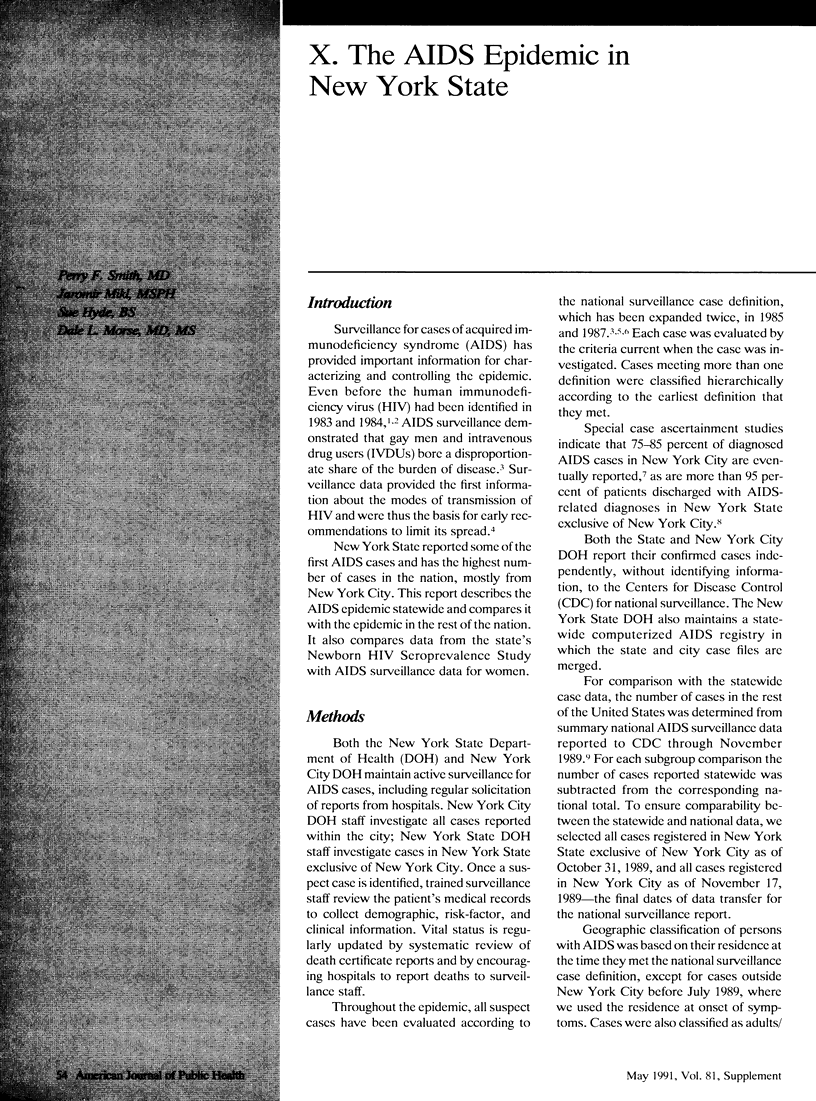
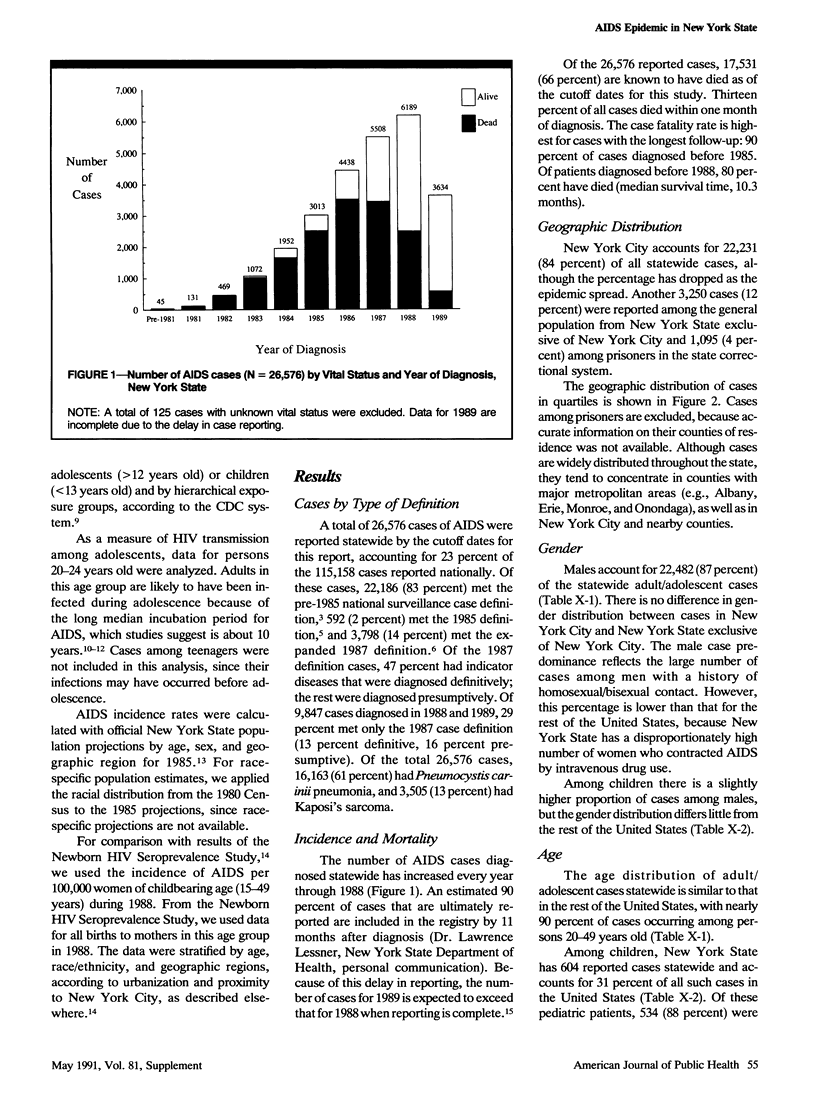
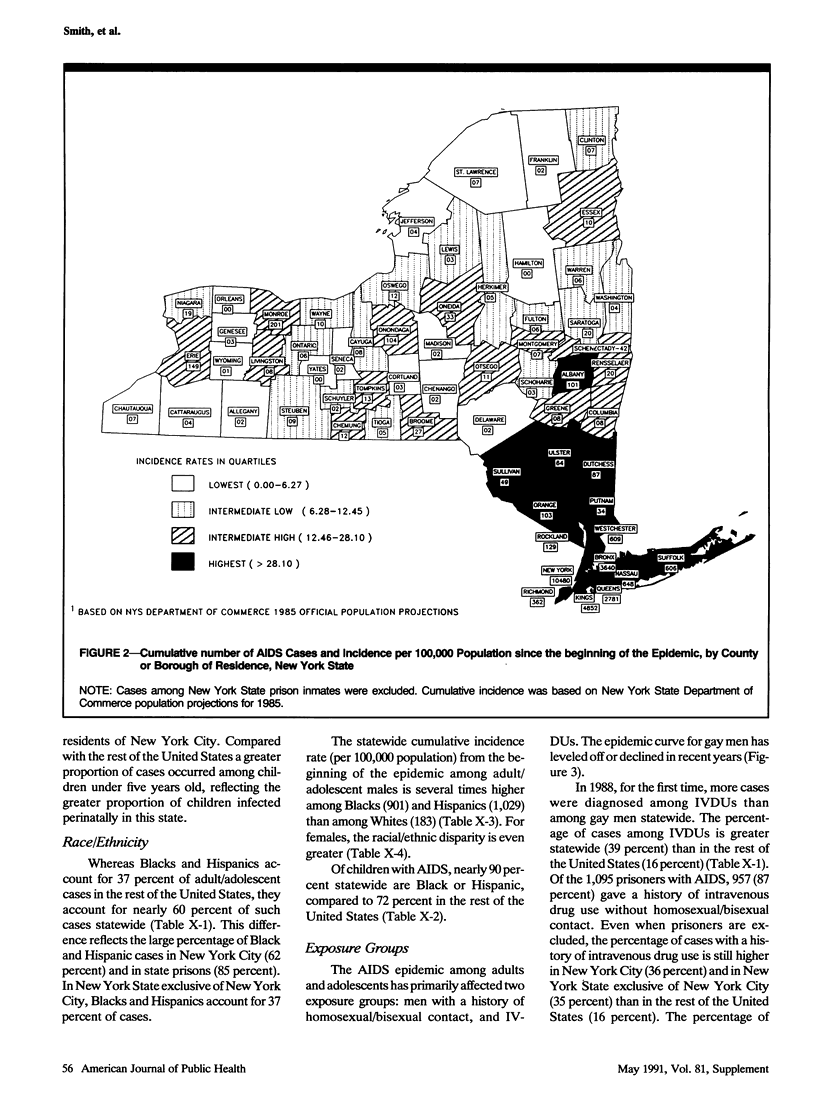
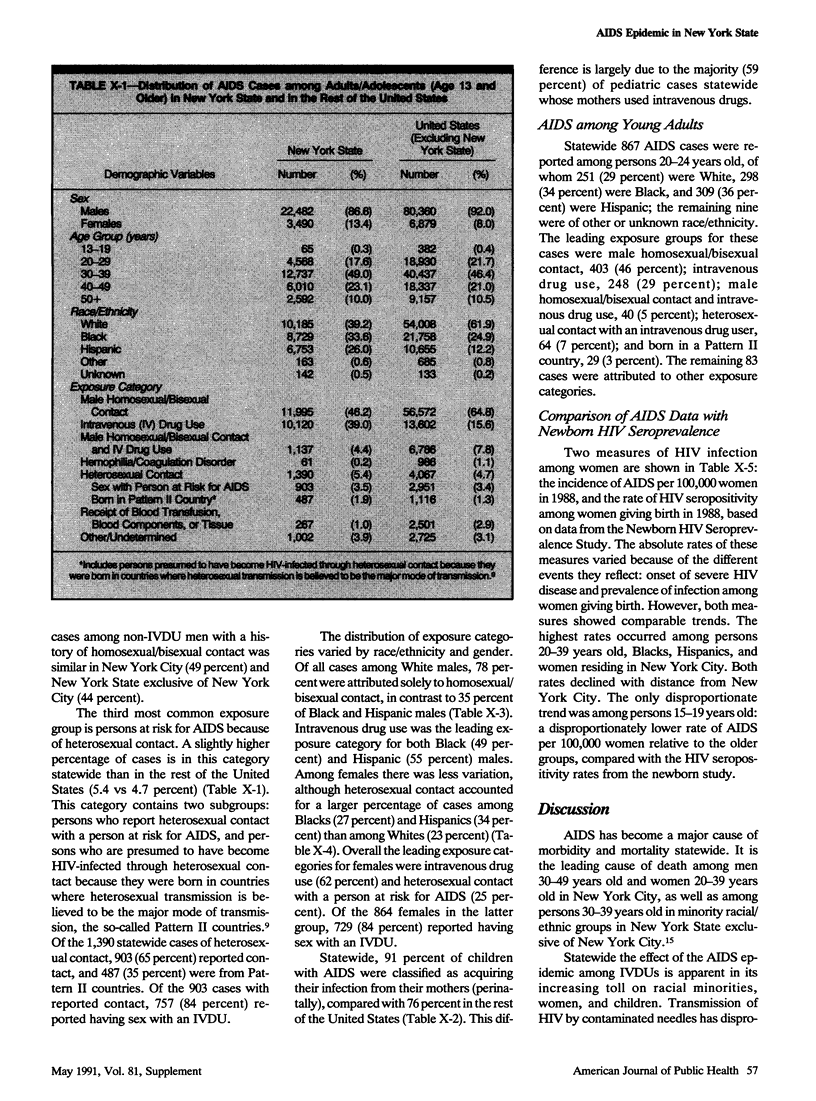


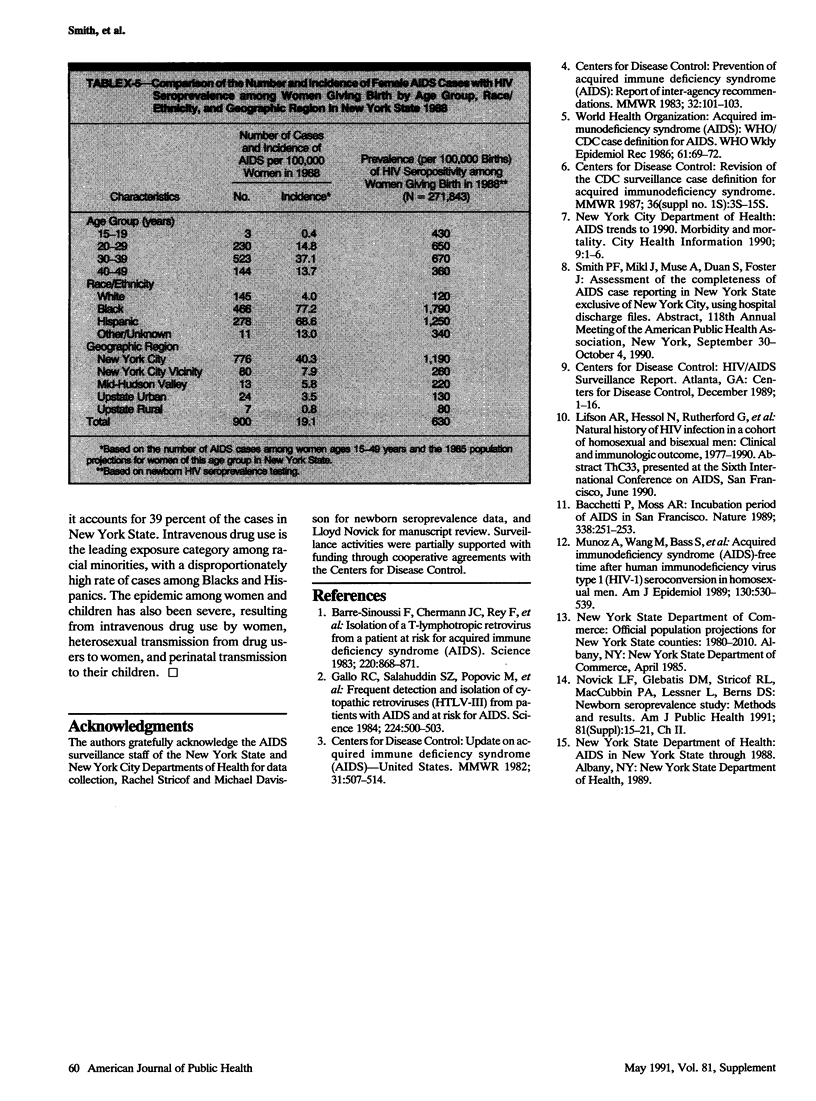
Selected References
These references are in PubMed. This may not be the complete list of references from this article.
- Bacchetti P., Moss A. R. Incubation period of AIDS in San Francisco. Nature. 1989 Mar 16;338(6212):251–253. doi: 10.1038/338251a0. [DOI] [PubMed] [Google Scholar]
- Barré-Sinoussi F., Chermann J. C., Rey F., Nugeyre M. T., Chamaret S., Gruest J., Dauguet C., Axler-Blin C., Vézinet-Brun F., Rouzioux C. Isolation of a T-lymphotropic retrovirus from a patient at risk for acquired immune deficiency syndrome (AIDS). Science. 1983 May 20;220(4599):868–871. doi: 10.1126/science.6189183. [DOI] [PubMed] [Google Scholar]
- Gallo R. C., Salahuddin S. Z., Popovic M., Shearer G. M., Kaplan M., Haynes B. F., Palker T. J., Redfield R., Oleske J., Safai B. Frequent detection and isolation of cytopathic retroviruses (HTLV-III) from patients with AIDS and at risk for AIDS. Science. 1984 May 4;224(4648):500–503. doi: 10.1126/science.6200936. [DOI] [PubMed] [Google Scholar]
- Muñoz A., Wang M. C., Bass S., Taylor J. M., Kingsley L. A., Chmiel J. S., Polk B. F. Acquired immunodeficiency syndrome (AIDS)-free time after human immunodeficiency virus type 1 (HIV-1) seroconversion in homosexual men. Multicenter AIDS Cohort Study Group. Am J Epidemiol. 1989 Sep;130(3):530–539. doi: 10.1093/oxfordjournals.aje.a115367. [DOI] [PubMed] [Google Scholar]
- Novick L. F., Glebatis D. M., Stricof R. L., MacCubbin P. A., Lessner L., Berns D. S. Newborn seroprevalence study: methods and results. Am J Public Health. 1991 May;81 (Suppl):15–21. doi: 10.2105/ajph.81.suppl.15. [DOI] [PMC free article] [PubMed] [Google Scholar]


